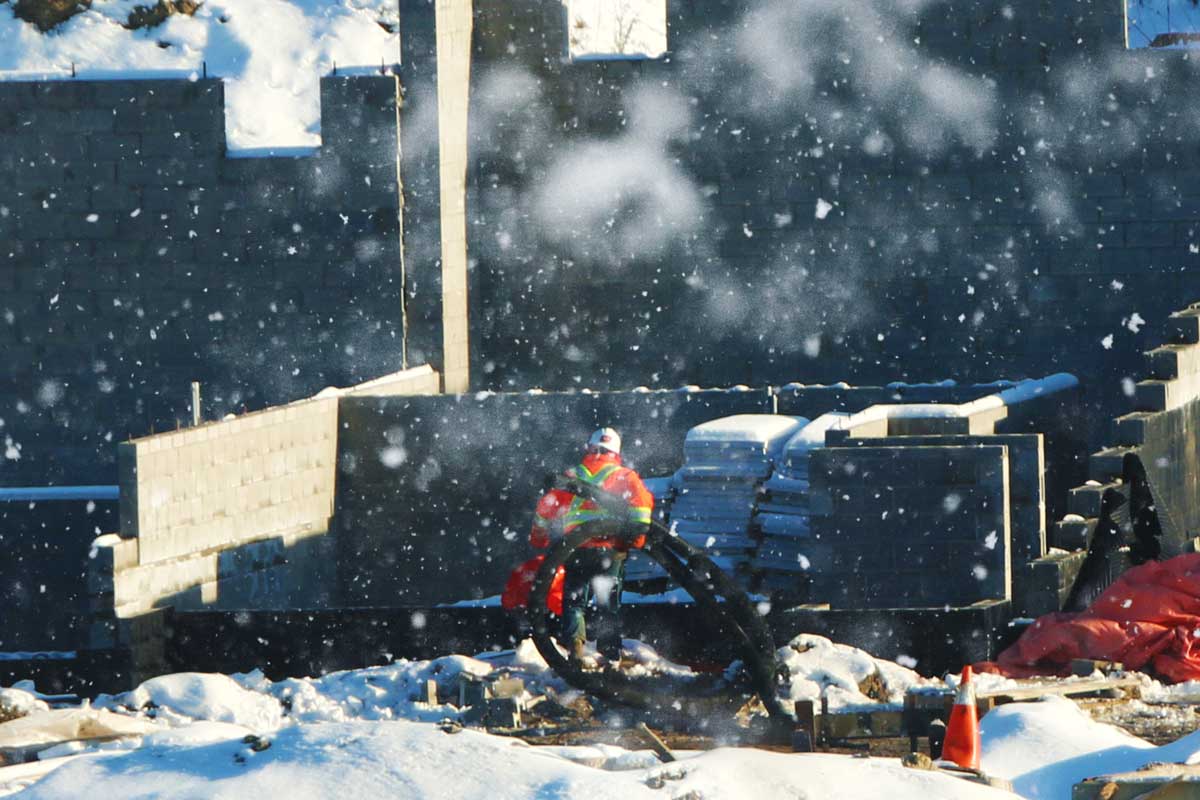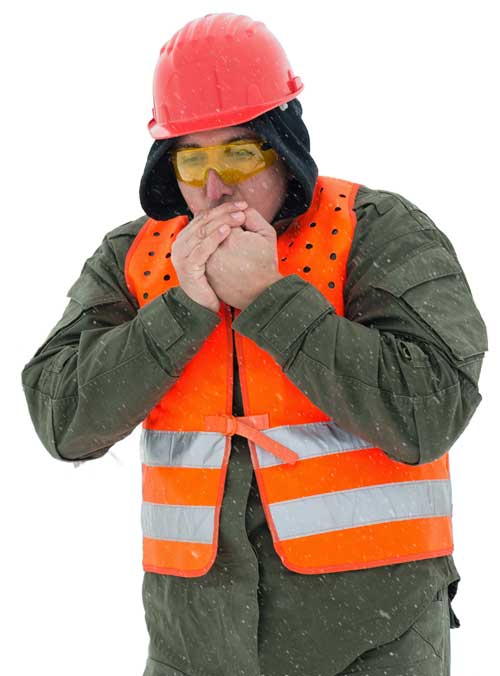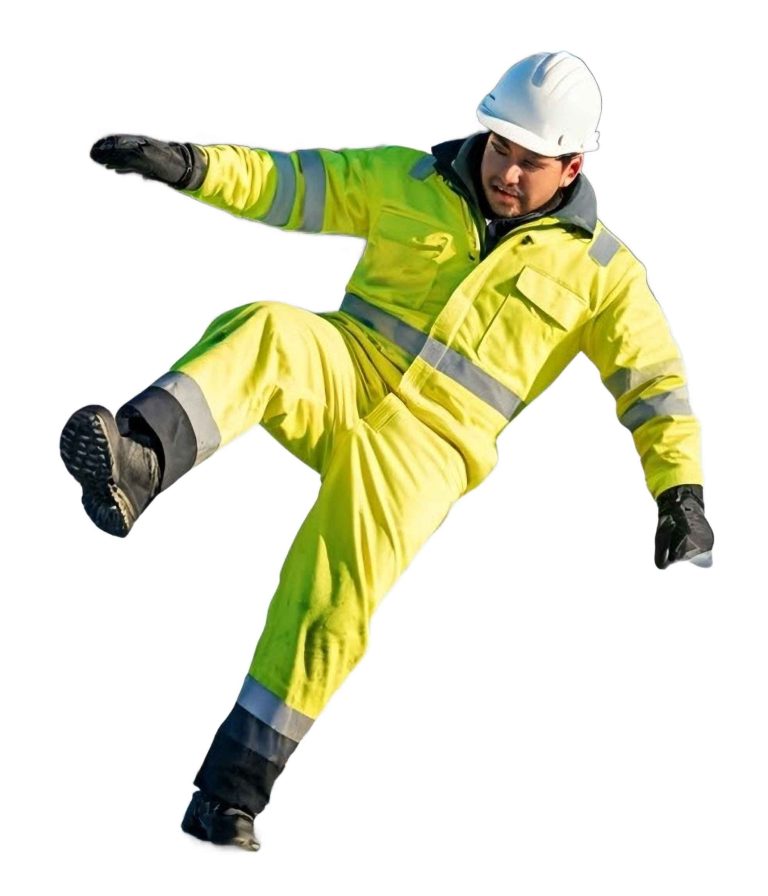When Is It Too Cold to Work? How to Prevent Hypothermia
The weather is becoming increasingly unpredictable. In many places, record-breaking cold spells now alternate with record-breaking heat waves. Cold work stresses the body in many ways and may lead to hypothermia. Please don’t get sick from the cold by knowing when it is too cold to work. If you work in the cold, you may be at high risk for a slip and fall injury. Check out the 5 Easy Ways to Prevent a Tragic Slip and Fall.
Can Cold Work Make You Sick?
Contrary to popular belief, you cannot catch a cold from cold air. Still, irritation from cold air can cause bronchospasms and asthma in susceptible people, and immune function may be impaired, leading to an increased chance of a respiratory infection. Working in the cold continually may cause muscle and joint problems, such as back pain, knee problems, and carpal tunnel.
Studies show that cold weather increases the rate of hospitalizations for coronary heart disease (CHD) and stroke. If you have risk factors for these conditions, take extra precautions when the weather turns frigid.
Low temperatures may adversely affect cognitive abilities such as reasoning and alertness, which could, in turn, heighten the likelihood of hazardous actions and ultimately increase injuries.
What Happens When You Are Out In The Cold?
Your body must maintain a relatively constant temperature (around 37 Celsius (98.6 °F). Cold air temperatures, being wet or immersed in water, and windy conditions all cause you to lose heat. If your body temperature gets too low, your bodily systems cannot work correctly, which can lead to complete failure and death. Check this post to learn how to keep warm in extreme cold.
When your body is cold, it shuts down the blood circulation close to the skin and the extremities, such as the hands and feet. Your body conserves heat but keeps the blood flowing to your core and vital organs. Painful or numb hands, feet and exposed surfaces on the face are among the first signs of trouble, and you should seek warmth. Manual dexterity and motor coordination quickly decrease in the cold, making it very difficult to do relatively simple tasks, impairing work performance and increasing the risk of accidents.
When the skin’s surface is frozen, it is called frostbite or frostnip. The longer the skin is frozen, the deeper the freezing goes, and the more dangerous your situation. Death of the tissue may occur, and permanent damage may result. In extreme cases, the extremity will have to be amputated.
Hypothermia
When your body temperature gets below 35 °C (95 °F), you have hypothermia and are in severe danger. The brain is one of the first organs to be affected, and hypothermic persons are often unaware of their dangerous situation. Check this post to Learn How to Keep Warm in Extreme Cold.
The warning signs of hypothermia include.
- Shivering
- Slurred speech or mumbling
- Slow, shallow breathing
- Weak pulse
- Clumsiness or lack of coordination
- Drowsiness or fatigue
- Confusion or memory loss
- Loss of consciousness
Falling into the water near the freezing point will quickly make you hypothermic. A person is likely to survive only 15 to 45 minutes.
What Is the Coldest Temperature You Can Legally Work In?
There is no legislated specific minimum temperature that applies to all workplaces. The minimum temperature you can be asked to work in will depend on the particular conditions of the work environment and the nature of your work. Most legal jurisdictions in North America have a suggested minimum of 18 °C for indoor work but allow many exceptions, such as where the workplace is ordinarily unheated or where the necessity of opening doors makes the area’s heating impracticable. Many jurisdictions reference the current ACGIH TLVs® for heat and cold exposure. Unfortunately, the cold stress guidelines are unavailable to the general public.
Employers in the United States, Europe, and Canada must take reasonable precautions for the safety of their workers. Workers in these regions have the right to refuse unsafe work. If you have any warning signs, such as shivering, slurred speech or mumbling, it is best to let your boss know and move to a heated area. It is also helpful to watch for these warning signs in your co-workers, as you may be able to spot them before they do. Remember, cold stress can rapidly progress to hypothermia, which can be life-threatening.
The Wind Chill Index Is the Best Indicator of the Cold
Wind displaces the warm air around your body and evaporates moisture from your skin. Wind can make you feel cold even in relatively warm temperatures, and it is known as wind chill.
The internationally accepted wind chill index provides an excellent way to evaluate the temperature danger zone. It is displayed in temperature-like units. By equating outdoor conditions to an equivalent temperature without wind, the index represents the degree of “chill” that your skin senses. Check the wind chill on your local weather television forecast or mobile phone application before you go to work or on a hike.
When Is It Too Cold to Work?
If you’re bundled up, dry, and exerting yourself moderately, guidelines advise frequent warming breaks when the windchill temperature drops to -26. The risk of frostbite increases rapidly when wind chill values go below -27. All non-emergency work should cease when the windchill drops to -43.
In conclusion, given the unpredictable weather the planet is now experiencing, always check the windchill and temperature when working outside. Dress appropriately, and if it is cold, warm up frequently. You have the right to a safe work environment. Let your boss know when it is too cold to work.
You may also work in the heat if you work in the cold. Explore “When Is It Too Hot To Work” and our Free Heat Stoke and Heat Exhaustion Prevention Training.









is very importat.
very important information, thannk
Thank you for this training it is very important not only to the people of CANADA but the whole world i request for it to be implemented and recommended by the world Health Organization and put on the schools’ syllabus for all countries both developed and third world to save the remaining generation very many diseases are killing people especially in the underdeveloped countries and doctors fail to establish the cause and many people in developing countries are employed in dangerous workplaces without their knowledge of such risks and i myself i lost my sister who suffered from lung cancer and she was not smoking but her job was fish smoking as a local method of preserving fish in Africa but the cause of the disease was never established so it is very important for everyone to be aware of these risks in the environment and responsibility should always be taken through mandatary training of employees.